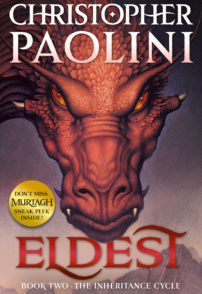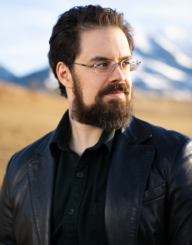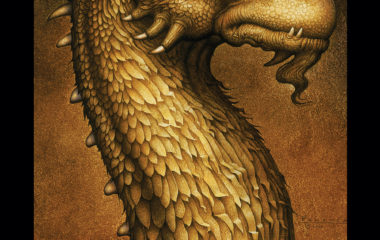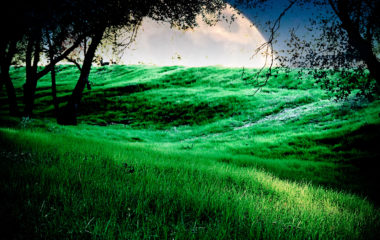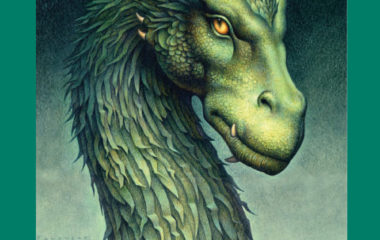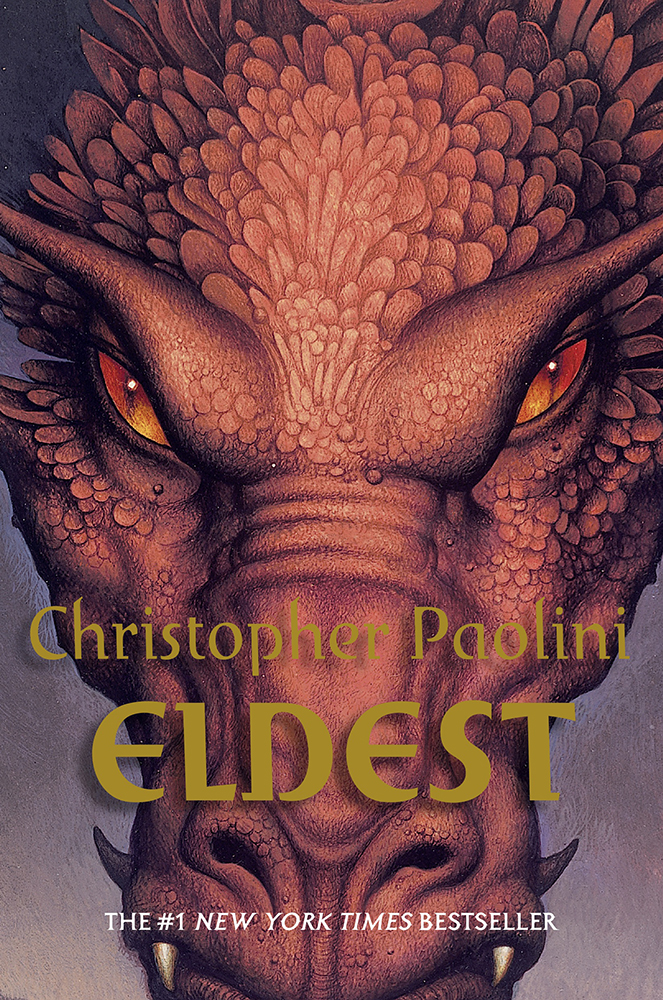
Many readers never got the opportunity to explore the extra content included in the deluxe editions of the Inheritance Cycle. In honor of the holidays, we’re re-releasing this excerpt from Domia Abr Wyrda, found below, that was originally included in the special edition of Eldest. Newsletter subscribers received early access.
Heslant the Monk was a member of the Arcaena, a human religious sect that holds all knowledge as sacred. He took a great risk when he published the history of Alagaësia in the volume Domia Abr Wyrda—Dominance of Fate. Heslant was executed for this act of defiance. Galbatorix declared the work and its creator blasphemous and ordered all copies destroyed. The book proved even more important than the monk could have predicted; Eragon would eventually find details on the location of the Vault of Souls hidden with its text.
If you like this scene, be sure to check out the rest of the deleted and deluxe content from the Inheritance Cycle!
A Brief History of Alagaësia
(An Excerpt from the Preface of Domia Abr Wyrda by Heslant the Monk)
. . . and I suppose that I should provide a summary of the following content before plunging into its depths, so that the unsuspecting literary enthusiast may decide beforehand whether this is the type of composition he enjoys perusing, lest he find himself suddenly engulfed in the dark and convoluted byways of dwarven politics and only then realize that, no, he would rather read a ballad or a collection of poetry to soothe his stomach after an especially heavy supper in his dining hall.
Domia Abr Wyrda is my life’s work: a complete history of the land of Alagaësia, beginning with its earliest myths and legends and proceeding through the intervening millennia to the present. Herein I detail the origins and cultures of each of the known races, including the dwarves and the elves, whom I sought out in their secret places. It is my hope that this book will serve as a bridge between the past and the future, preserving a true account of events that would otherwise be lost in the confusion following the Riders’ fall and the darkness of Galbatorix’s reign.
Before I proceed even with this summary, it seems wise to pause and explain what is meant by alagaësia, and thus define the exact nature of my subject and hopefully avoid unnecessary confusion in later chapters. The word itself is one of Elvish extraction that means “fertile land.” The dwarves and Urgals possess their own appellations for this region, of course, but we humans chose to adopt the elves’ title, and with good reason. The gods have blessed our home with vast amounts of arable soil, timber, iron, gold, gems, and all else a prosperous kingdom needs to thrive. As for the physical boundaries of Alagaësia, they are commonly identified as follows: beginning at the shore of the Western Sea and extending east to the far side of both Du Weldenvarden and the Beor Mountains, and spanning the territory between the southernmost point of Surda and the north shore of Vroengard Island.
Little is known of what lies beyond these varied and far-flung locations. During my decades of research, I learned that the Riders had instituted an extensive program of exploration, flying to the farthest reaches of land and water. Some of their discoveries were already familiar to the elves—who have preserved both maps and lore describing the continent from which they emigrated across the ocean—but the rest was as yet uncharted territory.
Unfortunately, Galbatorix burned the great libraries in Doru Araeba and Ilirea, although not before pillaging them for his own personal collection. This act must count as one of the most heinous crimes of history; it is impossible to calculate the size of our loss. Overnight Galbatorix consigned almost every piece of writing produced by humans either to the flames or to the impenetrable void of his hoard. He destroyed the only existing copies of innumerable plays, histories, mathematical treatises, ancient spell books, and other unique documents, and we must regard what was contained within their pages as forever beyond recovery. Our race is diminished as a result.
Of the Riders’ collected wisdom, only fragments remain, cryptic references scattered like chaff before the wind throughout dwarf scrolls and the elves’ ancient stores of knowledge. These often impenetrable shards of truth provide, for the most part, nothing but frustration to one who studies them and is unfamiliar with the source manuscripts, but what can be gleaned seems to indicate that while humans may also dwell somewhere outside of Alagaësia—and Urgals as well, for they are hardy creatures—the elves and dwarves exist nowhere else.
And what, an educated reader might ask, about dragons? Despite the romantic fantasies propagated throughout the Empire at regular intervals by individuals bold enough to beard our dark king—a perilous endeavor at best—I do not believe that any skulblaka escaped Galbatorix and the Forsworn. Dragons spoke to each other through their minds, and when Galbatorix began to kill them, every dragon from around the world would have rushed to defeat him and, in doing so, ensured their doom.
While it is a popular pastime among learned minds to imagine sending expeditions to search for friends and allies in unknown lands, such ventures are currently impracticable and will remain so into the foreseeable future. Since Galbatorix assumed his station, every kingdom has devoted its resources to war. They cannot spare men and ships for voyages of indeterminate length aimed south, past the daunting Beor Mountains; north, where it grows ever colder, until the ocean and land become entombed underneath a crushing shell of ice that does not melt even in summer; or east and west, across near-endless tracts of salty waves and empty grass-bound plains.
So. Domia Abr Wyrda begins with an account of the dwarves, who—along with the dragons—are the original inhabitants of Alagaësia. (For the sake of simplicity, dates are given in the dwarf calendar, as it is the only accurate record of years that encompasses all of known history.) Thus nearly eight millennia ago, or 0 A.C. (After Creation), the dwarves believe that their god Helzvog breathed life into the first members of their race.
Within a generation after 0 A.C., the climate in the plains where the dwarves lived underwent an abrupt change, transforming the plains into what we now know as the Hadarac Desert, and forcing the dwarves to migrate into the Beor Mountains so as to fend off starvation. Soon afterward, their first king, Korgan, discovered the hollow mountain Farthen Dûr, which has housed Tronjheim, their capital, ever since.
From then until 5217 A.C., the dwarves occupied themselves with tunneling and mining; waging periodic wars among their clans; building their monumental cities, which are the embodiment of architectural perfection; and amassing an impressive body of mathematics, astronomy, astrology, metallurgy, chemistry, botany, and other branches of natural philosophy of which we in the west are now mostly ignorant. Though the dwarves possessed a rough acquaintance with the workings of magic, it was not until the elves introduced them to the ancient language that they truly began to master it.
During this first age, dragons did little more than eat and breed. The Chronicles of Ingothold say that the great fire-worms congregated in the heart of the Hadarac Desert, as the heat was to their liking, but that they also nested in the Spine and the Beor Mountains, where they seemed to have taken a special delight in persecuting the dwarves. No one has unearthed evidence to suggest that the dragons ever developed a culture or language of their own, notwithstanding their manifest intelligence. It is possible that they only acquired these attributes after becoming linked with elves and humans.
This state of affairs persisted until 5217 A.C., when elves arrived in Alagaësia at the place where Teirm now stands. From whence did the elves come and why? They will only say that their homeland was called Alalëa—a very rare word in the ancient language that has multiple meanings, the most likely in this case being “a melancholy dream of great beauty”—and that they left to escape the consequences of some terrible mistake.
Whatever the reason may be, the elves soon committed another mistake when, in 5291 A.C.—having established themselves across Alagaësia—they slew a dragon for sport, thinking them naught but beasts. (Elves still ate meat then.) The war that followed was so ferocious, it threatened to drive both races to extinction. The fighting ceased in 5296 A.C. only after a certain elf, Eragön, chanced upon an abandoned dragon egg—if indeed it was actually abandoned—raised the subsequent hatchling, and then traveled among the dragons and convinced them to end their hostilities. Then did the älfakyn and skulblaka join together and form the Dragon Riders, to bind one to another and make certain that the newly formed peace would endure forevermore, which was perhaps the most significant occasion in all of history.
Only two events worth noting occurred during the next three centuries. The first was the appearance of Urgals in Alagaësia, who, like the elves, sailed east from across the sea. That they could build vessels capable of traversing such distances, and were able to navigate them accurately, indicates that the Urgals of that era had achieved a level of sophistication far greater than the brutes we encounter in our own age.
Upon disembarking, the Urgals signed treaties with the dwarves and elves, and for two decades, they refrained from provoking their allies. Ultimately, it proved impossible for the Urgals to maintain their oaths, for they are a bellicose race, and they choose their leaders and determine their social order based upon feats of combat. Without battles in which to prove themselves, their young rams, as they are called, had no opportunity to win the status necessary to acquire mates or to supplant their elders. These and other pressures drove the Urgals to raid the dwarves and elves and to challenge them in feats of arms. The Riders quickly intervened, razing the Urgals’ villages and banishing their tribes to the fringes of Alagaësia, where they no longer posed a significant threat.
The Urgals settled throughout the Spine—especially in the north, to which they are partial—and also in the wilder reaches of the Beor Mountains. They still occasionally attacked the dwarves and the elves, but since they proved to be no more of a nuisance than, say, the internal strife among the dwarf clans, the other races tended to ignore them. From then unto the fall of the Riders, the Urgals’ fortunes declined as humans multiplied and expanded their holdings, thereby reducing the Urgals’ remaining territory. With Galbatorix’s ascendancy, however, and the loss of the Riders, Urgals have been freed to return to haunts that they have not occupied for centuries, and even millennia in some instances. Throughout the Empire, they now bedevil many towns that were once safe.
Sharp-eyed readers may have noticed by now that, unlike many authors, I do not refer to Urgals as monsters. This was a deliberate attempt on my part to avoid perpetuating certain preconceived notions that do nothing but impede our understanding. Urgals are no more monsters than dwarves or elves. It is merely due to an unfortunate flaw in their culture and temperament that we have not yet joined forces with them. “But,” many people will protest, “they are animals! They hate us, and they love naught but slaughter and bloodshed!” Nonsense. They only hate us insomuch as we, and the dwarves and elves, represent the other to them, a status that centuries of antagonism have reinforced. It is true they have a predilection for battle, but I have also seen their cunningly wrought carvings and the savage beauty of their woven straps, with which they record the crests of their clans. And I once had the opportunity to watch from hiding an Urgal dam caring for her young, and I have yet to encounter a human woman who displayed more solicitude toward her brood than did that bull-necked matron. If we could but temper the Urgals’ warlike habits with more civilized behavior, then we might find that our races have a large measure in common. Moreover, I believe that much of the hostility that festers between Urgals and humans is the result of our almost universal revulsion toward their grotesque appearance, a trait that is certainly no fault of their own.
The second of the two noteworthy events I mentioned was the brief visit to Alagaësia in 5596 A.C. of some twenty human warriors, who sailed up from the south and landed in the vicinity of Surda. They and the dwarves met and exchanged gifts, and then the humans departed soon afterward.
Thereafter, until 7203 A.C., little happened among the dwarves, elves, and dragons, except for the usual succession of kings, queens, poets, playwrights, births, deaths, and other historical minutiae. Though I examine this age in some detail, I must admit that I found it monotonous to research, much less to write about. Happiness, as a philosopher once said, is a boring activity to watch others engage in.
Both the dwarves and the elves consider this era, and even extending back to the creation of the Riders in 5296 A.C., the golden age of their civilizations, when they reached the pinnacle of their knowledge and power. I should point out that the remarkable stability both races achieved was not solely the result of the Riders’ influence—as Eddison tried to prove in his Dialogues—but was also a product of the dwarves’ and elves’ impressive longevity. When each generation lives for a century or more, it takes much longer for a culture to change or to assimilate new information.
In 7203 A.C., King Palancar landed near Teirm with a fleet of ships carrying his entire nation. He and his people, the Broddrings, had sailed east and north from some unknown coast, intending to colonize Surda, but just as they were about to reach their destination, an unexpected squall blew them back out to the open sea. When Palancar managed to regain sight of land, he found himself confronted by the inhospitable wall of mountains that is the Spine, which prevents ingress to the main body of Alagaësia. He forged onward, searching for an estuary or pass that would grant the Broddrings entry—along the way establishing a settlement that became the town of Kuasta—and eventually discovered Teirm, though the city was not called such by the elves who then occupied it.
Unlike the dwarves and elves, we know little of our own history before this point. All I can say with authority is that the Broddrings fled both famine and war in their land of birth, bringing as many landholders and slaves with them as they could. No one followed them except for a single ship that arrived six years later, bearing a tribe of men with coal-black skin who spread across Surda and formed the basis of the current nomad tribes, as well as the famed artisans of Aroughs, Dauth, and Aberon. It has also been whispered that something foul and evil pursued humans to Alagaësia, a dark race that travels in shadows and preys off the flesh of our kind, a fear known only by the name that the elves bestowed upon it: the Ra’zac. This I cannot confirm or deny, but the rumors seem too abundant not to have some basis in fact.
When Palancar encountered the elves, they explained to him which land was theirs, which was the dwarves’, and which was the dragons’, and granted him the right to claim that which was unoccupied. They and the Riders also demonstrated their physical and magical prowess. Intimidated, Palancar dared not argue with them—at least not so long as his docked fleet was at their mercy—and so he agreed to their terms.
The Broddrings roamed Alagaësia for several years before they discovered Palancar Valley—as it was to be dubbed—and decided to make it the basis of their kingdom. After Palancar vanquished the local Urgals and founded the town that is now Therinsford, his hubris grew so massive, he thought to challenge the elves for the region between the Spine and Du Weldenvarden. It is still baffling why—having witnessed the Riders’ might and main—he believed he could prevail in this matter. On this subject, I agree with Eddison, who reasons that Palancar was in the early stages of dementia, an assumption that is borne out by his later actions and those of his family, for madness always runs through the bloodline.
Three times Palancar’s warriors faced the elves, and three times the elves obliterated them. Aware of the Urgals’ fate and having no desire to share in it, the Broddring nobles sent an envoy to the elves, and they signed a treaty without Palancar’s knowledge. Palancar was then banished from his throne. He and his family refused to leave the valley, however, and instead of killing him, the elves constructed the watchtower Edoc’sil—now Ristvak’baen—to ensure that he could cause no further strife.
The elves took pity on the remainder of our ancestors and allowed them to live in Ilirea, which the elves had abandoned during their war with the dragons nearly two thousand years earlier. Ilirea became the new capital of the Broddring Kingdom, which exists even to this day as the center of Galbatorix’s empire: Urû’baen.
That brief confrontation with Palancar—which cost humans far more than it cost the elves—convinced the then leader of the Riders, Anurin, to amend the elves’ magical pact with the dragons to include humans. Anurin recognized that, as a race, humans are hardier than the elves and that we reproduce faster than the dwarves, making it inevitable that we would soon proliferate across Alagaësia. Before that day arrived, he wanted to weld our species together—using a flux of spells, oaths, and commerce—in order to prevent what he saw as a likely war for domination of the continent.
The controversy incited among the elves by Anurin’s decision was so fierce and acrimonious, it prompted him to take one more momentous step: he and the other Riders seceded from the elf kingdom and established themselves on the island of Vroengard, where they built their great city of Doru Araeba. Many reasons existed for doing so, but the primary one was, and here I quote my own translation of Anurin’s account of the affair, “Since the Riders were now responsible for the protection and welfare of three races—although the dwarves yet insist upon guarding themselves—and also for the preservation of their combined knowledge, I believed that it was improper for any one group to control us. We had to be impartial if our authority was to be respected by dragons, elves, and humans alike.” Noble intentions, to be sure, but flawed by a fatal weakness: without some form of oversight, there was no one who could point out the Riders’ own lapses and indulgences.
For six and a half centuries, we humans built our villages, towns, and cities, ever more complacent within our envelope of safety. We were content to work our fields and shops and trade with the dwarves and elves, never pausing to consider that our greatest threat lay among those who had sworn to protect us.
And so it came to pass in the year of 7867 A.C. that a boy, Galbatorix by name, was born in the province of Inzilbêth. He became a Rider and showed great promise, but in his nineteenth year, a band of Urgals killed his dragon. The loss drove Galbatorix mad. Denied a second dragon, he slew two Riders and fled into the wilderness, where he remained for seven years. At the end of that time, he encountered Morzan, who became the first of the thirteen Forsworn.
Morzan helped Galbatorix steal another dragon, then they both hid until Galbatorix’s dragon, Shruikan, was grown and Morzan had learned all of his master’s dark secrets of magic.
Galbatorix and Morzan revealed themselves in the winter of 7896 A.C. By the spring solstice of 7900 A.C., Vrael was dead, Vroengard and Ilirea had been sacked, the elves and the dwarves had been forced to retreat to their ancient places of safety, and the Riders—the pride of the humans, elves, and dragons—the Riders were all but exterminated.
It is now the year 7982 A.C., and Galbatorix is still king, the dwarves and elves are seen no more outside of their caves and forests, and we have no hope that any mortal man can rival Galbatorix’s power or that he will ever be removed from the throne.
It is this story, then, that I intend to tell in full over the following pages. It may be conceit to think that I can compress eight millennia into one book . . . and yet I must try. We cannot allow this knowledge to be lost, no matter how grim the times we live in. I know that if we do someday find the means to overthrow Galbatorix, it will only happen by remembering the deeds of our ancestors and by avoiding their mistakes.
Eldest (Book Two)
Eragon and his dragon, Saphira, have just saved the rebel state from destruction by the mighty forces of King Galbatorix, cruel ruler of the Empire. Now Eragon must travel to Ellesmera, land of the elves, for further training in the skills of the Dragon Rider: magic and swordsmanship.
Soon he is on the journey of a lifetime, his eyes open to awe-inspring new places and people, his days filled with fresh adventure. But chaos and betrayal plague him at every turn, and nothing is what it seems. Before long, Eragon doesn’t know whom he can trust.
- PURCHASE:
- Amazon
- B&N
- Penguin Random House

